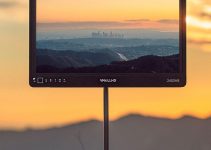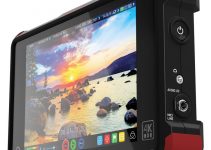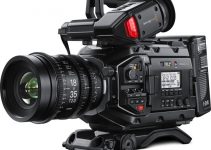The camera you film with will only ever be as good as the lens you shoot through. Contractors have their power tools, artists have their brushes, and cinematographers have their lenses.
The lenses you choose to keep in your kit need to be functional, practical, and the best that there is to give you the full potential of your camera. But that doesn’t mean those lenses need to break the bank.
Peter Lindgren is here to give us a peek into his camera bag and the lenses he uses to get the most out of his Sony A7III. In this video, he explains what is so special about them, and shares the details on the ones he can’t live without.
When you’re shooting video, having a wide range of lenses in your bag is really important. Depending on what you’re shooting that day, you’re going to need a set of lenses that can capture everything near, far, and in-between.
Ideally, you want to keep lenses in focal lengths (full frame equivalent) 16mm to 200mm. That will allow you to frame the appropriate shot for whatever gets thrown your way. Unfortunately, we don’t live in a perfect world. There is no affordable, clean zoom lens that can cover 16mm-200mm and, in general, any lens that has a massive zoom range isn’t going to suffer from some very serious limitations.
Let’s look at the lenses Peter can’t live without.
Tamron 28-75mm f/2.8 Di III (B&H, Amazon)
Key Features
- E-Mount Lens/Full-Frame Format
- Aperture Range: f/2.8 to f/22
- One XLD Element, One LD Element
- Three Aspherical Elements
- Price: $879
In the last several years, Tamron has really improved the quality of their lenses. Not only have the optics become superb, the build quality and feel of there lenses is next to none.
This focal range is fantastic for 85% of the shots a camera person would need to cover on a standard shoot day. It is just wide enough to capture footage of subjects who are close to you, and gives you the leeway to zoom in just enough to capture them moving generally moving around. On top of that, the f/2.8 aperture is a sweet spot/compromise for most indoor lighting situations and depth of field.
Sony Vario-Tessar T* FE 16-35mm f/4 Lens (B&H, Amazon)
Key Features
- E-Mount Lens/Full-Frame Format
- Aperture Range: f/4 to f/22
- One AA Element; Four Aspherical Elements
- Three Extra-Low Dispersion Elements
- Price: $1,248
This is a terrific wide zoom lens that really lets you capture footage in an up close and personal way. It is also a stabilized lens which might not seem super important with a 5-axis stabilized camera (or if you’ve got a A7sIII with gyroscopic stabilization) but it definitely helps smooth things out when you’re tracking with a subject.
With an f/4, it isn’t the fastest lens in the world, but it is light and very responsive with Sony’s AF system.
Sony FE 24mm f/1.4 GM (B&H, Amazon)
Key Features
- E-Mount Lens/Full-Frame Format
- Aperture Range: f/1.4 to f/16
- Two XA Elements, Three ED Elements
- Nano AR and Fluorine Coatings
- Price: $1,398
The G master series of lenses are Sony’s premiere offering for stills cameras, and they produce some breathtaking footage as well.
They’re super clean and have fantastic bokeh wide open at f1.4, and render an image that is nearly perfect edge to edge.
It’s always good to have at least one fast, prime lens in your bag on a shoot. This lens is going to assist you in collecting those subtle detail shots that will really help whatever-it-is-that-you’re-shooting stand out to your clients.
You’ve Got This In The Bag
Lenses are a very personal, purposeful thing. As you grow as a cinematographer you’ll probably buy and trade dozens and dozens of lenses until you get your hands on a set you just can’t part with, ever.
Obviously, these lenses are great for shooting video projects but film projects tend to stick to a set of lenses that all have a consistent look throughout the range. Cooke lenses, with the signature stop sign bokeh, are the go-to lenses for lots of DPs but those lenses come with a serious price tag that will always keep them out of the reach of most of us.
It’s best to find a set of lenses for your personal kit that offers the practicality of what you need for work, then buy, sell, and trade lenses that interest you as your learn and develop. At first, to me, they all just sorta looked the same – but 20 years-in now it’s easy for me to spot what makes a lens good or bad, and I’ve got a few I’ll never part with, and could never do without.
[source: Peter Lindgren]
Disclaimer: As an Amazon Associate partner and participant in B&H and Adorama Affiliate programmes, we earn a small comission from each purchase made through the affiliate links listed above at no additional cost to you.
Claim your copy of DAVINCI RESOLVE - SIMPLIFIED COURSE with 50% off! Get Instant Access!





